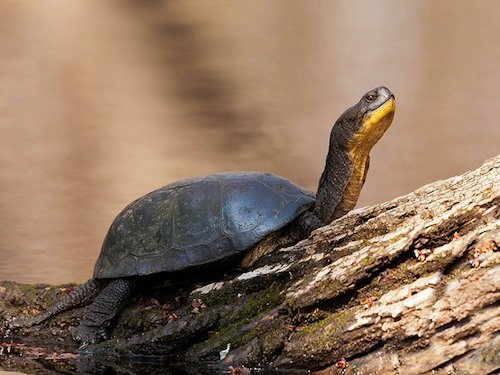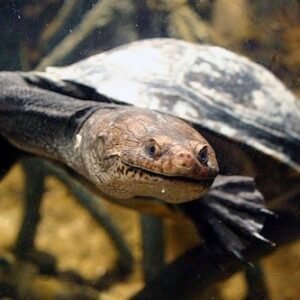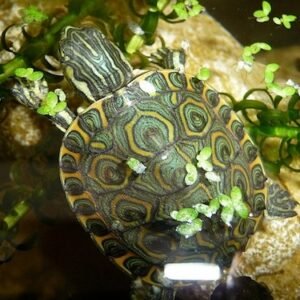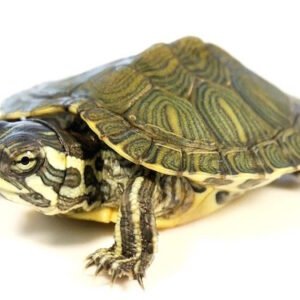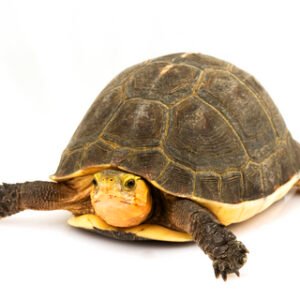Introduction to the Blanding’s Turtle
The Blanding’s Turtle (Emydoidea blandingii) is a freshwater turtle known for its striking physical characteristics. One of the most recognizable features of this species is its high-domed shell, which provides protection and buoyancy in aquatic environments. This shell is typically a dark brown or black color, often adorned with yellow spots or markings that further enhance its visual appeal. The Blanding’s Turtle is also distinguished by its bright yellow throat, a feature that stands out against the darker hues of its shell. Adult Blanding’s Turtles typically weigh between 2 to 4 pounds and can measure around 7 to 10 inches in length.
Behaviorally, the Blanding’s Turtle is known for its semi-aquatic lifestyle, spending a significant amount of time in and around water bodies. It is primarily active during the day and is often seen basking on logs or rocks near ponds and wetlands. This species is an omnivore, feeding on a variety of plants, insects, and small aquatic animals, thus playing a vital role in its ecosystem by contributing to nutrient cycling and maintaining ecological balance.
Natural habitats for the Blanding’s Turtle predominantly include wetlands, ponds, marshes, and slow-moving rivers, where they can find adequate food sources and protection from predators. These habitats are crucial for their survival, as they provide essential nesting sites and suitable conditions for breeding. The presence of Blanding’s Turtles is often an indicator of a healthy aquatic ecosystem, highlighting their cultural and environmental significance. This turtle species is not only a vital part of its habitat but also a symbol of aquatic biodiversity, underscoring the importance of conservation efforts aimed at protecting both the Blanding’s Turtle and its natural environments.
Conservation Status and Threats to the Blanding’s Turtle
The Blanding’s Turtle (Emydoidea blandingii) is currently classified as a threatened species in many areas across its range due to a significant decline in population numbers. This freshwater turtle is primarily found in the Midwest and Northeast regions of the United States and parts of Canada. As of the latest estimates, their populations continue to diminish, prompting various conservation organizations and governmental bodies to take action. The IUCN Red List categorizes them as “Near Threatened,” reflecting broad concerns around their viability in the wild.
Human activities present numerous risks to the Blanding’s Turtle. One of the most severe threats is habitat loss, as wetlands and natural water bodies are increasingly drained for agriculture, urban development, and infrastructural projects. In addition, specific instances of road mortality occur when turtles attempt to cross highways, often resulting in fatal accidents. The fragmentation of their natural habitat poses another significant risk, isolating populations and hindering genetic diversity, crucial for their long-term survival.
Pollution represents yet another threat, as contaminants from agricultural runoff and industrial waste can degrade water quality in their habitats, affecting not only the Blanding’s Turtle but many other species that share this ecosystem. Climate change poses an emerging challenge as altered weather patterns and rising temperatures could affect breeding and feeding grounds, further stressing the already vulnerable populations.
In response to these challenges, ongoing conservation efforts have been established. These include habitat restoration initiatives aimed at improving wetland conditions, along with protective legislation designed to restrict activities that harm the Blanding’s Turtle and its habitat. Community engagement programs educate local populations about the importance of preserving this species, encouraging active participation in conservation practices. These collaborative efforts are critical in ensuring the survival of the Blanding’s Turtle for future generations.

